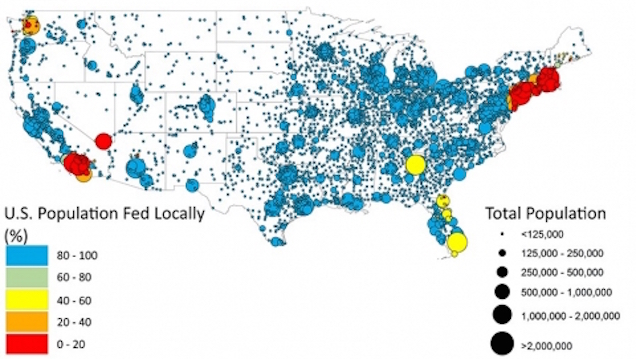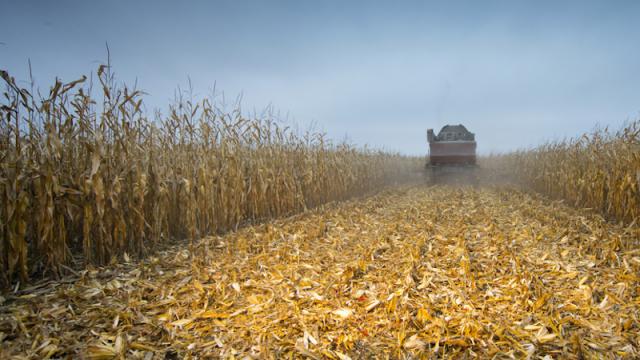An investigation into several locavore restaurants revealed that what was written on the menus wasn’t at all what was showing up at the tables. But the underlying reason for the problem is much bigger than just the restaurants: it’s the all-local diet itself.
Tampa Bay Times’ food critic Laura Reiley just completed an in-depth investigation of the purported local food restaurants in the area — and found that many of those restaurants supposed suppliers weren’t even growing the crops the menus claimed they supplied. The reason for the deception? A lot of it, Reiley notes, is money and people’s unwillingness to pay the high prices that all-local would really mean.
That’s certainly true, but there’s also another reason at play: A diet of all- local foods wouldn’t look anything like what people imagine it to be.
Last year, researchers at the University of California in Merced put together a look at how much of the US could survive solely on local foods. They concluded that (with the exception of a 10 per cent sliver of the country) the US could make it eating only local foods. The reason that they’re wrong about that is the exact same reason Tampa’s restaurants weren’t delivering what they promised.
The study, which was published in Frontiers in Ecology and the Environment, crunched the data on how much food was being produced on local farms — local being defined by them as 161km, so essentially what you could eat if nothing was driven more than two hours to get to you — versus the size of local populations. This is what they came up with:

University of California, Merced
Almost the entire US — 90 per cent — could be fed on all-local foods, the researchers said.
But if what you’re imagining is a fruit and vegetable cornucopia, perhaps delivered in a oak barrel out the back of a rusted red pick-up truck, then it’s time for a reality check about what’s really on your plate and what it’s like to farm.
The study uses the sum of kilojoules produced to come up with an estimate of where you could get enough to eat, but just getting enough to eat is only half the problem — it’s also about getting the right things to eat and things that we will eat. We’ve gotten more and more used to a table that criss-crosses seamlessly all over the globe and uses shifts in global seasons to make all food in season year-round. At the same time, farms themselves have gotten much more specialised — it’s not uncommon for just a few crops to make up the entirety of a farmer’s yield, and what’s more certain kinds of farms tend to cluster together.
Try this experiment: The next time you go on a trip, look at all the farms you pass as you drive away from your home and what’s growing in their fields. Then imagine eating that, over and over and over again. Because that — not what you see at your local farmer’s market — is what the whole country on an all-local diet would really look like.
Do I eat and like local foods? Sure. The beef in my freezer was just a cow hanging out in my neighbourhood not so very long ago. Tomato season is celebrated at my house with a festivity usually reserved for Christmas. And I love when whatever green leafy thing is at the bottom of my CSA box sends me to Google to figure out what the hell it is and just how I might manage to eat it. But do I want to eat only local foods? Not even close.
Survival alone doesn’t account for the way we eat — it’s also about history, how we socialise, convenience and, yes, the craving for variety. Local foods can absolutely be a part of that. But if we’re going to talk about eating only local, then we need to be honest about what that would mean and what that would really look like.
Top image from Shutterstock
